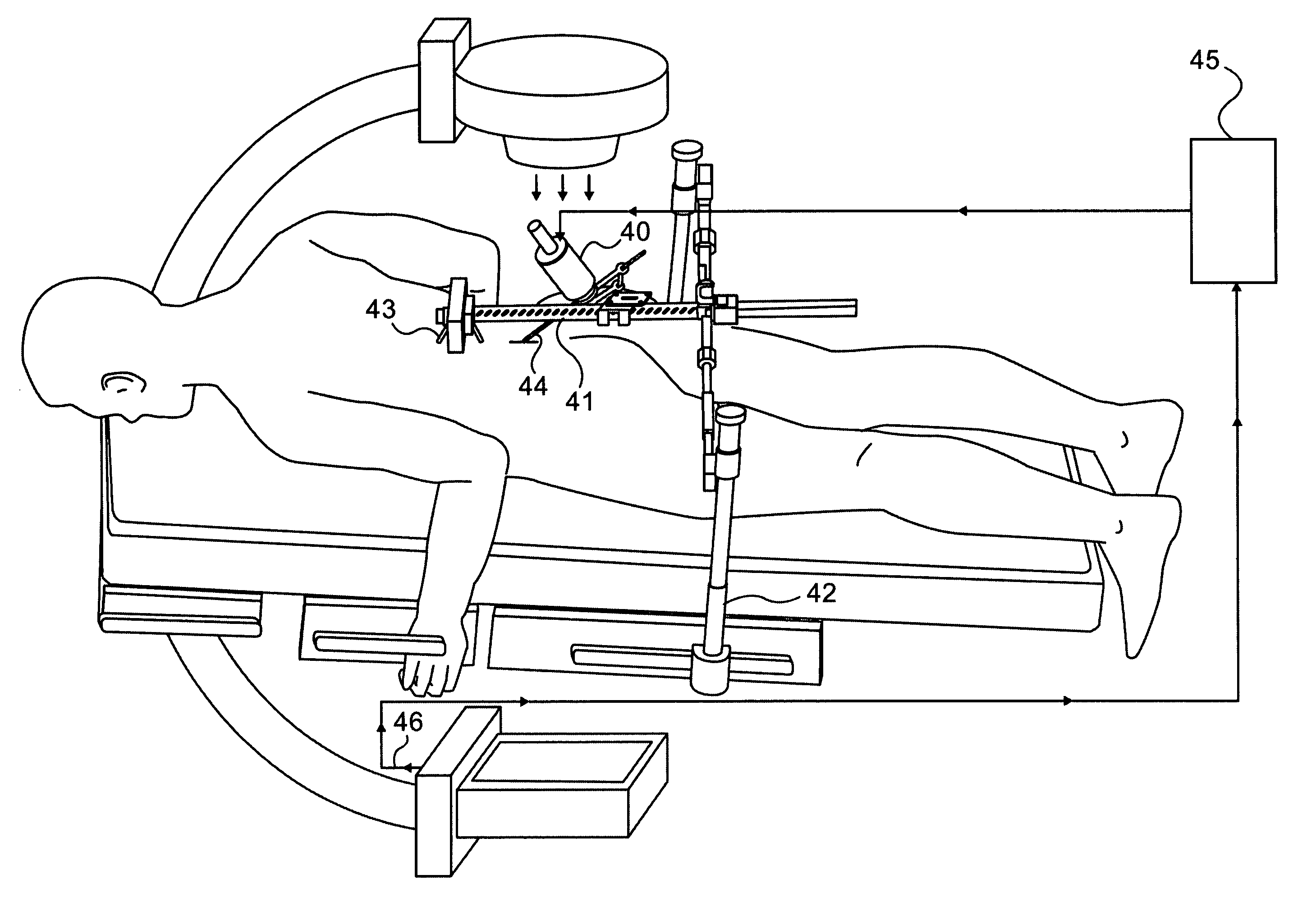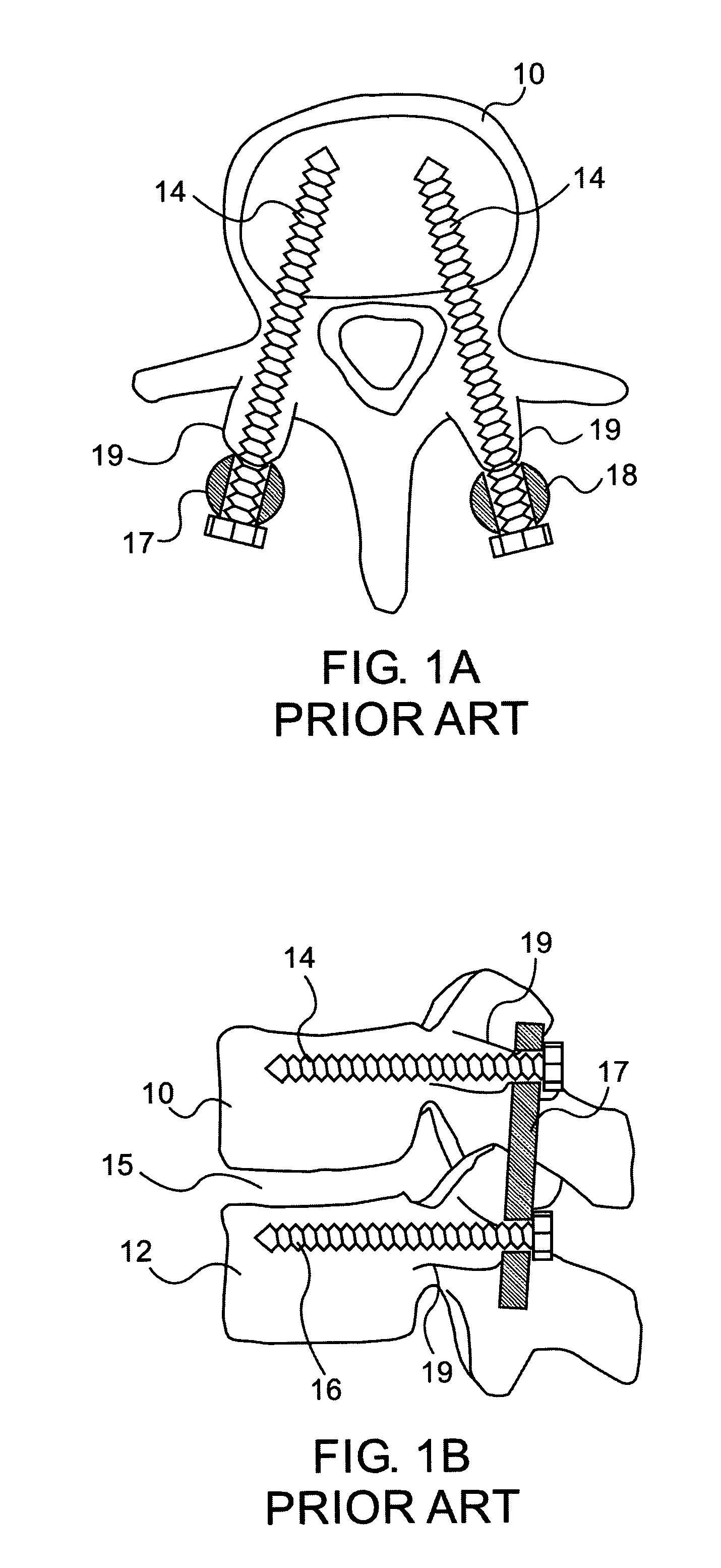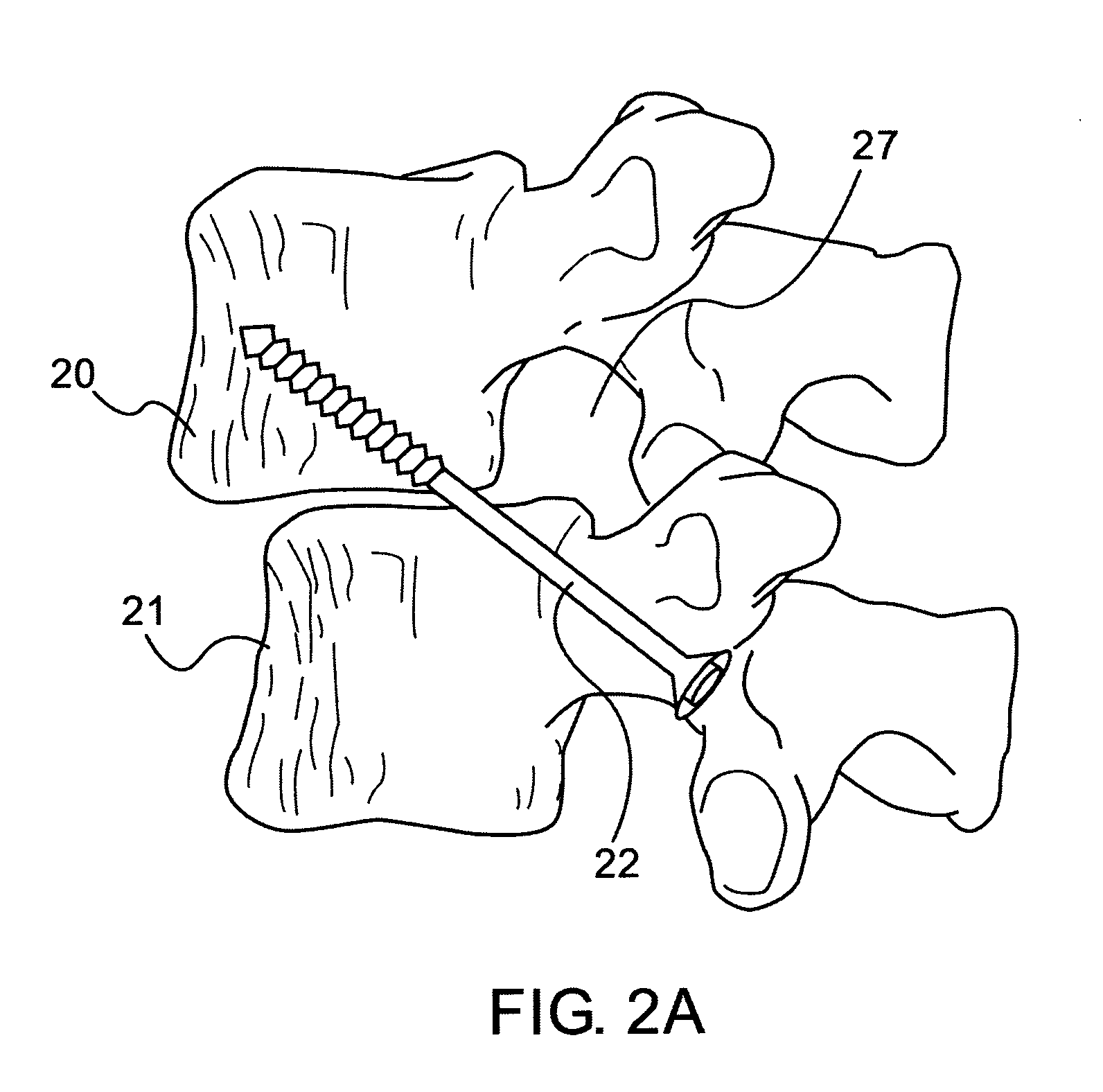Robot guided oblique spinal stabilization
a robotic control and oblique stabilization technology, applied in the field of vertebral stabilization techniques, can solve the problems that the high accuracy required for oblique entry cannot be generally achieved using robotic control, and achieve the effects of low invasive spinal stabilization, less trauma, and high accuracy
- Summary
- Abstract
- Description
- Claims
- Application Information
AI Technical Summary
Benefits of technology
Problems solved by technology
Method used
Image
Examples
Embodiment Construction
[0071]The current disclosure describes exemplary robotic devices and a robotic procedure for performing minimally invasive spinal stabilization, using only two screws inserted in an oblique trajectory from an inferior vertebra pedicle into the adjacent superior vertebra body. The procedure can be less traumatic than the previously described procedures using oblique trajectories, by executing the trajectory drilling in a minimally invasive manner through two stab incisions, using a robotic arm such as the SpineAssist supplied by Mazor Surgical Technologies Ltd. of Caesarea, Israel, to guide the surgeon along a safe trajectory. The robot arm is essential in such a minimally invasive procedure since no access is provided for direct viewing of the anatomical land marks, and the high accuracy required for oblique entry can only be generally achieved using robotic control.
[0072]Reference is now made to FIGS. 3A and 3B which are illustrations of sections of the spine showing how the nerve ...
PUM
 Login to View More
Login to View More Abstract
Description
Claims
Application Information
 Login to View More
Login to View More - R&D
- Intellectual Property
- Life Sciences
- Materials
- Tech Scout
- Unparalleled Data Quality
- Higher Quality Content
- 60% Fewer Hallucinations
Browse by: Latest US Patents, China's latest patents, Technical Efficacy Thesaurus, Application Domain, Technology Topic, Popular Technical Reports.
© 2025 PatSnap. All rights reserved.Legal|Privacy policy|Modern Slavery Act Transparency Statement|Sitemap|About US| Contact US: help@patsnap.com



